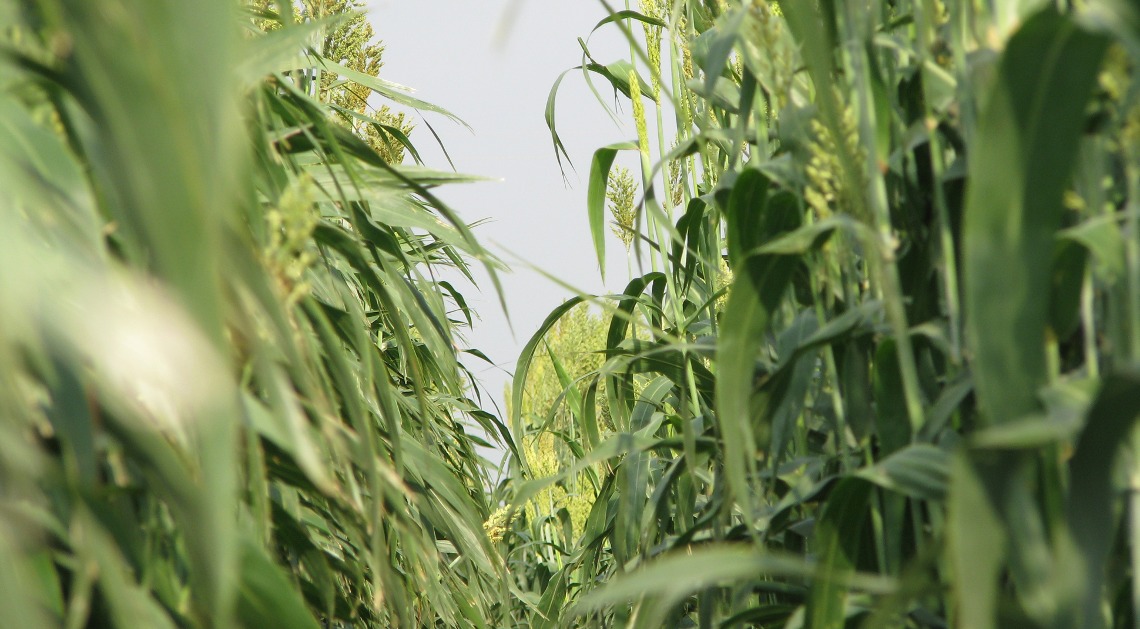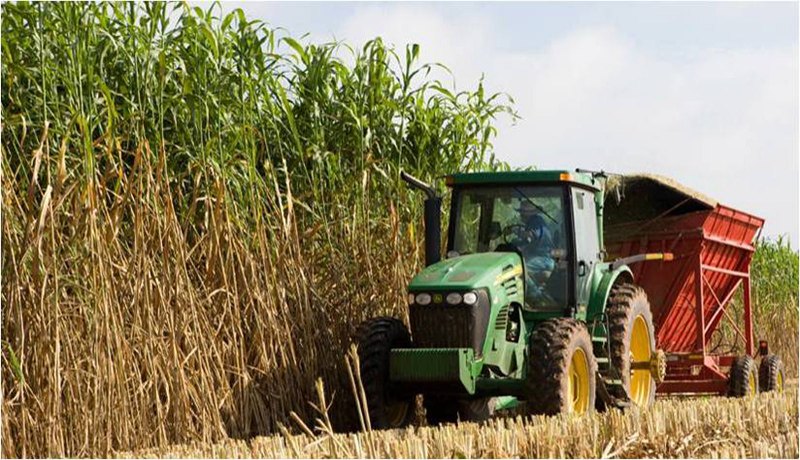
Versatile, resilient, and high yielding, sorghum has been giving us good ideas for millennia. People in northern Africa first domesticated this flowering grass some 8,000 years ago for a steady supply of porridge. Ben Franklin called sorghum “broom corn” and extolled its efficiency in sweeping up. And today, sorghum is grown for animal feed and biofuels on approximately 65 million hectares worldwide.
But for scientists at the Great Lakes Bioenergy Research Center (GLBRC), sorghum has the potential to help produce yet another good thing: environmentally sustainable, bio-based chemicals and fuels.

and biophysics John Mullet
As a dedicated bioenergy crop, sorghum has several advantages: its drought-resilience and heat tolerance mean it can grow even in semi-arid regions and on land not suitable for food crops, and its low nitrogen needs means it doesn’t require much fertilizer. It’s also hugely and abundantly productive. Fields of high biomass sorghum hybrids can reach up to twenty feet in height and produce up to 40 dry tons per hectare.
While it’s already possible to produce high biomass sorghum at about $50 a dry ton – the U.S. Department of Energy’s recommended threshold for making biofuels economical – GLBRC researchers see an opportunity to further improve this dedicated bioenergy crop for use in making specialty biofuels and bio-products. An annual crop, sorghum is seen as a potentially sustainable bioenergy crop for semi-arid regions of the country.
According to John Mullet, GLBRC researcher and Texas A&M professor of biochemistry and biophysics, improving sorghum starts with understanding the basis of energy sorghum’s productivity. “You can produce a lot of sorghum and you can produce it at a low cost,” say Mullet, “but the question is why is this plant so productive and resilient?”
For the past five years Mullet and his team have worked in collaboration with William Rooney, a Texas A&M sorghum crop geneticist and breeder, to research what drives biomass accumulation in energy sorghum. Since sorghum stems make up 75 to 80 percent of the plant’s biomass, the researchers started there, identifying a number of genes and hormones that start, maintain, and shut down growth, and which also cause variation in the stem’s composition.
“We’re beginning to understand how stem growth regulation works,” says Mullet. “And that means we can begin optimizing the rate and extent of stem growth and to engineer stem composition for optimal production of specialty biofuels and bio-products.”

In the next five years of research, Mullet plans to focus on improving the plant’s design by answering some new questions: Can high biomass sorghum be optimized to yield more biomass? Can the composition of the stem be engineered so that its biomass can be more efficiently processed into sugars for biofuel conversion? Can the sugars that accumulate in sorghum stems be used to synthesize specialty bio-products? Answering these questions will be key to determining to what extent sorghum will become a sustainable source of biomass as well as how it will complement other perennial bioenergy crops being improved by the GLBRC, such as switchgrass and wood poplar.
“We need an energy sorghum that provides the ecosystem services of a perennial crop, grows well on marginal land, and can accumulate large amounts of biomass optimized for conversion to biofuels and specialty bio-products,” says Mullet. “When we’ve got that, we’ll have a plant that can fill a valuable production niche, potentially helping to create a more bio-based economy.”
Mullet’s work is also highly collaborative in nature. From Texas, he works on projects with GLBRC colleagues in Wisconsin and Michigan and enjoys the multi-disciplinary nature of the research. “If you work in just one area, you often can’t deliver products that reach the marketplace,” says Mullet. “Within the GLBRC, we can collaborate across the entire production chain, from field to product.”
GLBRC is one of three bioenergy research centers established in 2007 by the Biological and Environmental Research program in the U.S. Department of Energy’s (DOE) Office of Science. GLBRC’s goal is to conduct transformational research and build the foundation of new cellulosic biofuels technology. For more information, visit www.glbrc.org or visit us on twitter @glbioenergy.